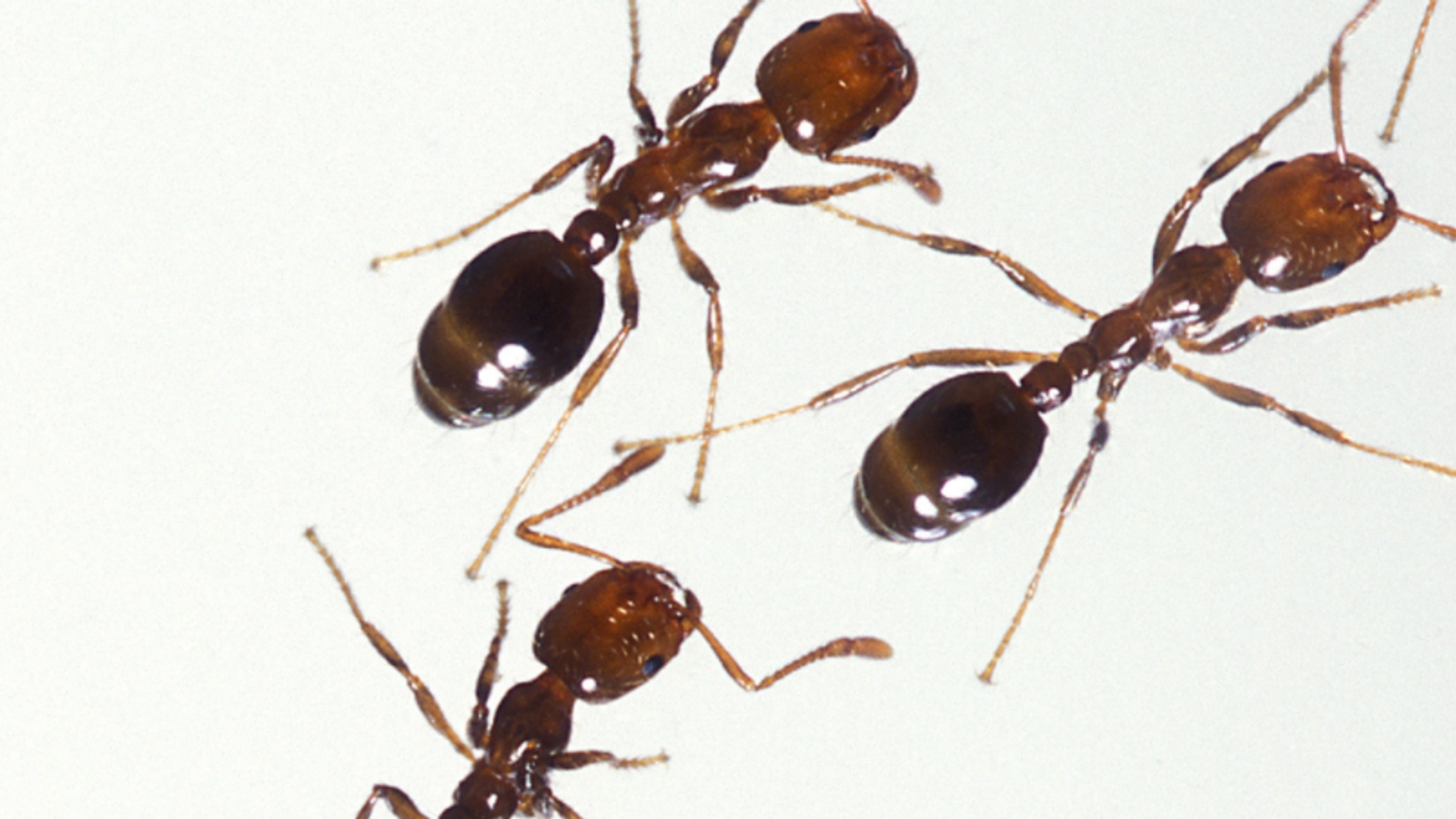Scientists have identified a new “social supergene” spreading between different species of fire ants and restructuring their societies.
Researchers from Queen Mary University of London have been “incredibly surprised” to see the new form of social organisation take over colonies in the wild.
Red fire ants are infamous for their painful sting and aggressive colony tactics and have been known to attack and kill small animals.
Read more:
Scientists discover new species of exploding ant
They are native to South America but are considered an invasive pest in the US, Australia and Taiwan – where they have proved incredibly difficult to eradicate, earning the species its Latin name, Solenopsis invicta, meaning “the invincible”.
Originally red fire ant colonies had only one queen, but the researchers uncovered genetic changes that took place almost a million years ago where colonies could have dozens of queens.
New research published in the journal Nature Communications has analysed the entire genomes of 365 male fire ants to examine the evolution of this gene – and found that it is spreading throughout multiple fire ant species.
Species are typically defined as independent because they can’t breed and exchange genetic information, but there are rare occasions when fertile hybrids can be created.In this case the researchers believe that the advantages for the colonies in having multiple queens have overrode any genetic incompatibilities, meaning “the genetic material repeatedly spread to other species from the one source species in which this new social form evolved”.
Dr Yannick Wurm, at Queen Mary University, said: “This research reveals how evolutionary innovations can spread across species. It also shows how evolution works at the level of DNA and chromosomes.
“It was incredibly surprising to discover that other species could acquire a new form of social organisation through hybridisation.
“The supergene region that creates multi-queen colonies is a large piece of chromosome that contains hundreds of genes. The many parts of a genome evolve to work together in fine-tuned manners, thus suddenly having a mix with different versions of many genes from another species is complicated and quite rare.”
Dr Wurm added: “Instead of executing extra queens as they would in a single-queen colony, the new version of the supergene leads workers to accept multiple queens.
“Having studied the history of the supergene and new social form extensively, we next want to identify which genes or parts of the supergene region, lead to these changes in behaviour. This will also help fill more gaps in our understanding of evolutionary processes.”
Rodrigo Pracana, a lead author of the study, also at QMU, said: “Our study shows how detailed analysis of large numbers of wild animals can provide surprising new insight on how evolution works.”

